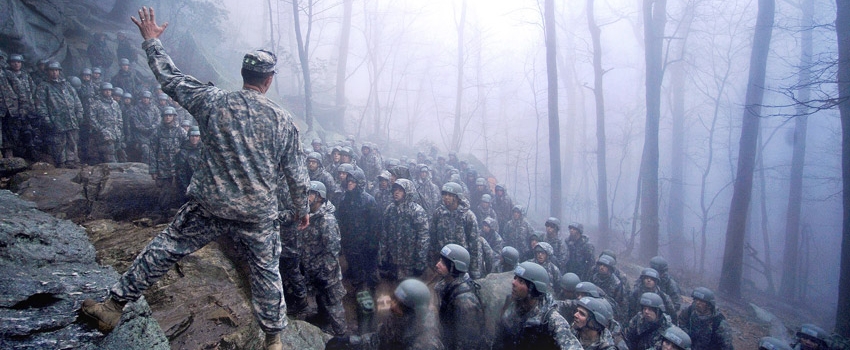
I’ve received some recent inquiries from clients, specifically around the images of service members I use on Facebook, and how my coaching process applies to those that have not served in the military.
Some ask, “why warrior?”
Others inquire, “Are you going to teach me to fight?”
Or “how can I accomplish more in my life if I am at war with someone?”
These are all great questions, but for those that know me and know my background it’s easily understood. For those of you that are beginning this journey with me, allow me focus this blog post to answer the questions around the use of the term warrior.
For starters, I spent 10 of the best years of my life serving this great country in the United States Army. In less than 10 months of arriving to my first duty station, the phone rang very early one October morning. Operation Urgent Fury was in full swing and as a young, green, second lieutenant, I was about to get one of the strongest lessons of my life. This lesson; however, was given to me 2 month earlier…I just didn’t realize it yet.
Rewind
It was late August 1983, where I was serving with the 82d Airborne Division. I was 2d Platoon Leader in A Company, 1st Battalion 508th Parachute Infantry Battalion. My roommate, let’s call him Doc Highspeed, was in B Company 2nd Battalion, 325th Parachute Infantry. Doc had just finished a grueling 9-day field-testing exercise. We had agreed to have a beer at the Officer’s Club after he got cleaned up and turned in his gear. I remember sitting at a table with Doc and his fellow lieutenants, rehashing the last 9 days. We had been there about an hour when in walked Doc’s Company Commander, Captain Michael Ritz.
As young LTs, you hang on every word that a captain has to share with you. We had waited specifically for Captain Ritz, to get feedback on how the unit had performed. One of the other platoon leaders present asked, “Captain Ritz, what took you so long?” Captain Ritz replied, “during the after action review I was being critiqued over my security and movement during a leaders reconnaissance. The evaluator said my security force was inadequate and that I was sky lining myself, making me vulnerable to enemy fire.” “Just for the record” he added, “if that were real combat, I’d never do that!”
Fast Forward
October 28th, I am watching the sunrise on a Caribbean island. My boots are caked with mud and my uniform is soaking wet from sweat and rain. I am receiving an update on current operations on the island. I hear that the medical students are safe. I hear the bulk of the Cuban resistance has been defeated. Then I hear that Captain Ritz had been shot and killed. I remember asking how he died. My Company First Sergeant replied, “While conducting a leader’s reconnaissance, Captain Ritz advanced without security and was shot and killed.” All I kept hearing however was…”if this was real combat, I’d never do that!”
Take Away
I am not critiquing Captain Ritz, I’m sharing a lesson learned from my past. I’ve come to realize there is a fine line between wanting to do something and actually doing it. When you think about it, it’s really the only two things we can control in our lives; namely, what we think and what we actually do. We can have the greatest of intentions, but without real life preparation we cannot expect ourselves to execute at a high level of performance. It is this thirst for self-awareness that I seek to instill in those I coach. It is the spirit of someone that seeks to change their behavior to reach their objectives that I want to bring out in all that read my posts.
So why warrior? Maybe the best analogy I can give you comes from, of all things, a yoga pose.
From yoga journal.com:
“It may seem strange to name a yoga pose after a warrior; after all, aren’t yogis known for they’re non-violent ways? But remember that one of the most revered of all the yoga texts, the Bhagavad-Gita, is the dialog between two famous and feared warriors, Krishna and Arjuna, set on a battlefield between two great armies spoiling for a fight. What’s really being commemorated in this pose’s name, and held up as an ideal for all practitioners, is the “spiritual warrior,” who bravely does battle with the universal enemy, self-ignorance (avidya), the ultimate source of all our suffering.”
In my next series of posts, we will look at the Warrior Poses and how they relate to lessons learned from a military perspective and how they apply to our “struggles” in everyday life.
All the best,
Warrior, out!
